
“For me it is a matter of seeing, a posture of mind.“
Writers and artists are frequently asked “Where do you get your ideas?” Googling the phrase just now came back with 508,000,000 results. Maria Popova, essayist and creator of The Marginalian website, has written a splendid piece on the question. She opens saying,
“Since long before the question of where good ideas come from became psychologists’ favorite sport, readers, fans, and audiences have been hurling it at authors and artists, much to their frustration.” [1]
Melissa Burkley, psychologist and author of the column “The Social Thinker” on the Psychology Today website, addresses the notion in a well-considered discussion of the conscious and unconscious sides, or aspects, of the human mind:
“So how is it that people who make their living writing can’t tell us where their story ideas truly come from? I think the reason has to do with the fact that the human mind is what psychologists call a “dual-process system . . . . Recognizing that ideas don’t just get consciously invented out of thin air is inspiring. Because we all daydream or get bored and find our mind wandering throughout our day. The only difference is that writers have trained themselves to listen to their inner mule rather than ignore it.” [2]
Burkley talks about handing “the reins off to your unconscious brain.” Easier said than done, of course, given how everyday life and responsibilities can freeze us in the here and now.
At the end of this post I have a few thoughts about how one can shift one’s self from the conscious to unconscious modes (then back again). For me it involves associative thinking, seeing into things (i.e., finding stories in objects), and dreaming.
Associative Thinking
We moved not too long ago and our small house has a little front room we like to call the solarium. It faces west and is filled with plants, a cozy sofa, an early 20th-century secretary desk made of recovered barn wood, and an old stereo system that plays CDs and cassette tapes. I like to sit there in the morning and nosh on my breakfast before my husband wakes up. I look out the windows onto our minor neighborhood street and let my mind wander.
There a many dog walkers and, when it’s warm, people running or walking for their exercise. I recall a moment: a tiny, fierce-looking woman on her morning run. As she ran by a second time and I realized that her running course was just our small city block. I was struck with a fictional notion, an associative notion: I am a 19th-century invalid, one of those fragile ladies from history, like Ida McKinley, the wife of U.S. president William McKinley.
I imagine sitting in one of those elaborate wicker-back Victorian wheel chairs, gazing wistfully out, or perhaps resentfully, as people pass by. I imagine stories . . .
- A couple, young and in love, the woman dark haired and small. Or perhaps they are older and also in love but for so long a time that the act of the man quietly offering his arm to his wife belies decades of passions spent and enjoyed;
- A smallish woman with her hair in a proper updo pushing an elaborate pram, her child so longed for and now so deeply cherished; or perhaps she is a modern era wife, visibly pregnant with an infant never wanted, another forced pregnancy and the child-to-be resented;
- A skipping girl, her hair ribbon flouncing about like a bird in flight, a girl who will go on to discover the first fossils in Dorset, or who will be struck down by a mysterious fever before the month’s end;
- A man, dark-haired, young, and desperately handsome, walking with an older man, his father likely by the matching profiles; desperate in other ways as they appear to be debating, the younger man nearly in tears, pleading with his dear Papa to accept that he is a man now with his own mind, the father devastated to lose his son to heathenism.
All ideas captured, all stories imagined, all triggered by a small, intense woman with dark hair and a prancing runner’s gait who passed by one morning.
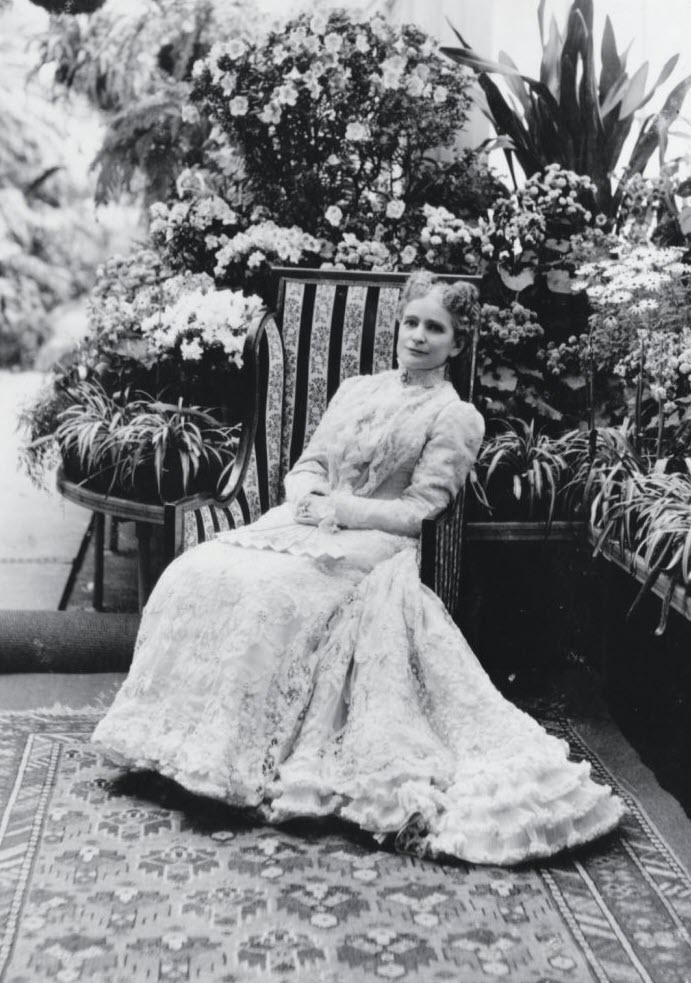
Ida McKinley in the White House Conservatory (ca. 1900).
Historical Note: McKinley’s mother & two young daughters died within a short period of time leading to a physical breakdown. She developed migraine and epilepsy. Despite her ailments she provided valuable advice and insight re: politics to her husband. She was also an active supporter of woman suffrage. [3]

Stories from objects
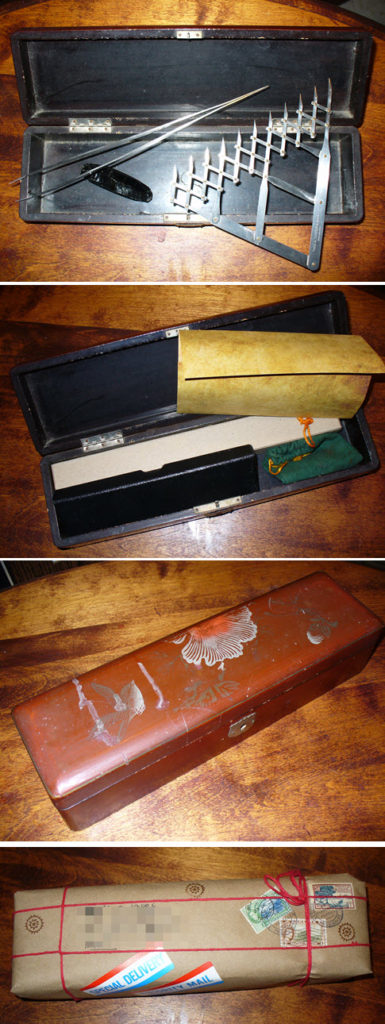

Some years back I was part of a one-day LARP (“Live Action Role-Playing”) children’s theater event. The Harry Potter books were out then and we borrowed the notion of a first day at a magical school as our context. [4] I played three different characters: an in-person postal delivery person, the six-month, pre-event author/editor of the monthly newspaper, and a Potteresque moving portrait character.
A good many props, sets, costumes, and the like were made. I was responsible for the “Owl Post” deliveries. Each child (there were 19, ranging in age from 9-14) received several letters and a package. I created them all, a total of 125 letters and 19 unique “magical gifts.”
I’ve written fictional correspondences over the years [5] so the letter writing was not easy but familiar. Creating the gifts was more of a challenge. What I ended up doing was wandering through thrift shops looking for things that might be made into something different. It was that posture of seeing again. If you’re looking for magical things then magical things appear.
The top left image shows the found objects assembled for one gift: a long metal tweezers, a scientific measuring device (an expanding spectrometer), a piece of obsidian, and an old wooden pencil box. As with each package, the items were boxed or wrapped or bagged within. And for each a personal letter was enclosed that described or told a story of the items. [6] Each box was then wrapped in heavy brown packing paper, tied with yarn or twine, and had vintage-era postage stamps affixed as well as various special delivery stickers or stamps.
The story for the letter came from the objects. The recipient for this package, the oldest kid attending, was still at that liminal moment where the child wants to believe but the almost young man is hovering. Knowing that, I selected these objects, and knowing that, a story came into my mind that the letter was from the former “Head Boy.”
I am going to take the extra step and send you some stuff I know you will need . . . I wrote . . . The professor of the mundane technology course always requires his students to gather examples of unusual technology. I never got around to showing him these so I figure I’d save you some time up front by sending them on. I’m sure he’ll be delighted. I ended by telling him of another professor: Too bad Professor E – – – (or E-cubed, as we upper levels refer to him!) is on sabbatical this year. He teaches a mean Magical Metals class. Tough as all get out but he has a great sense of humor which makes it do-able.
Postscript: A year later I heard from someone at the event that this package and letter thoroughly delighted this young man and that he thought the tools to be truly wizarding in nature!
dreamtimes
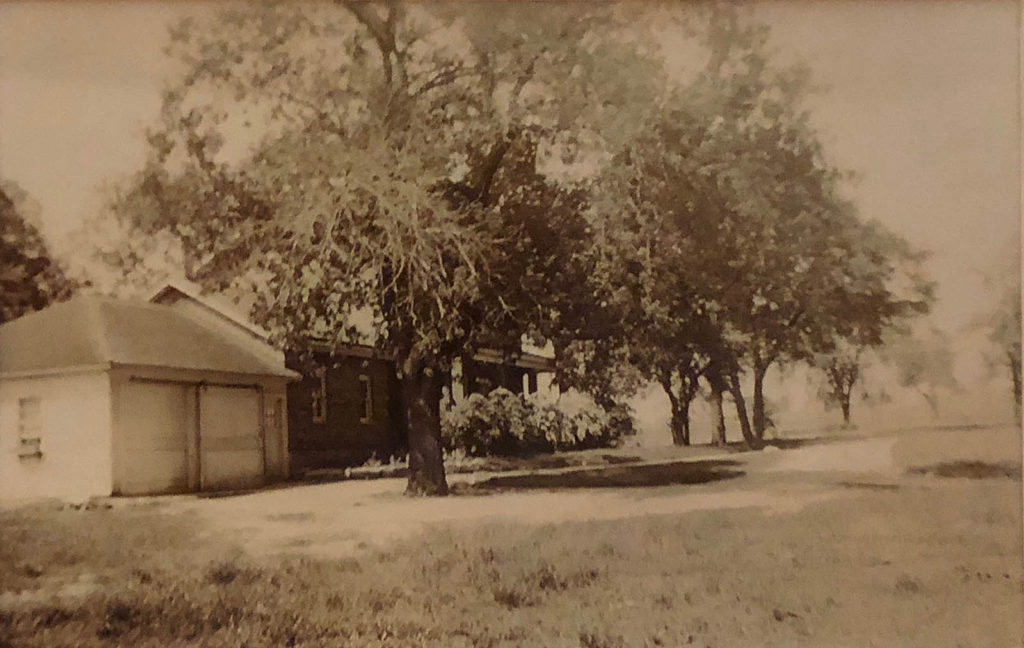
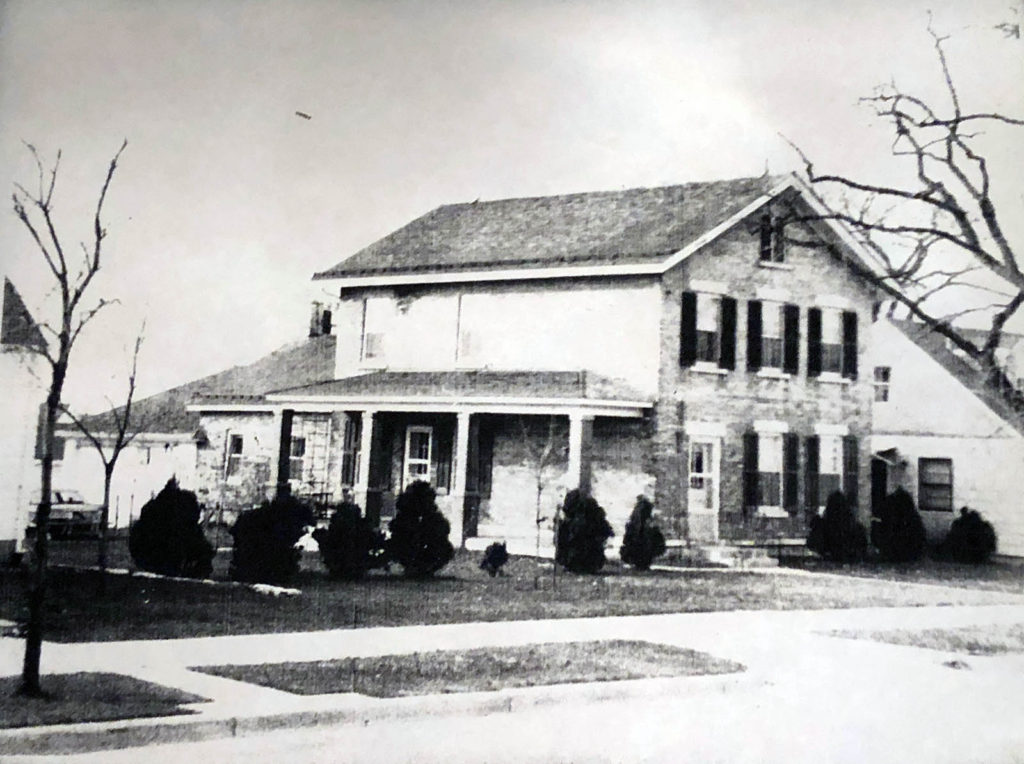
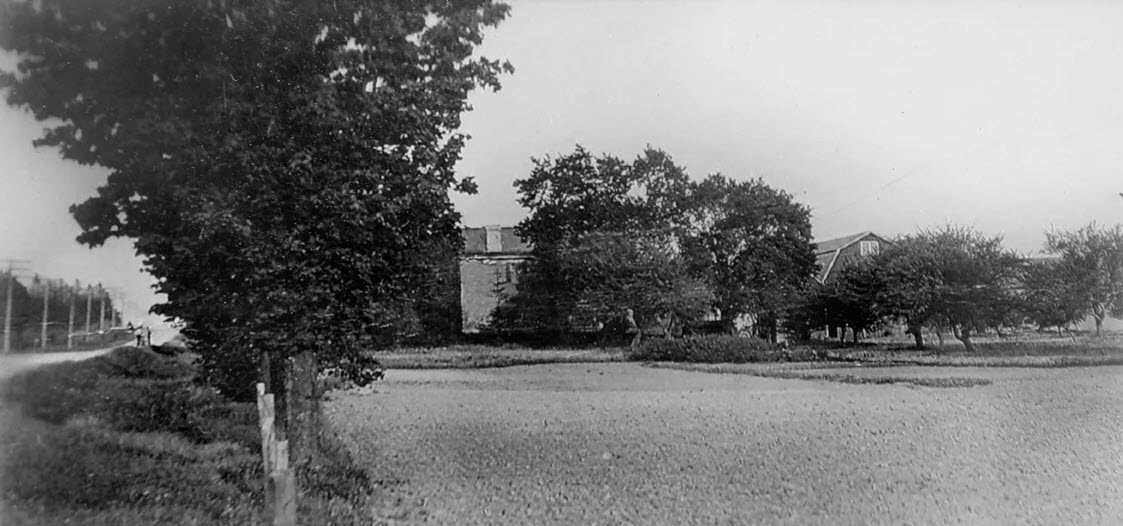

My childhood home was this farmhouse. The two upper left and lower right photos are from the 1930s, the lower left from around 1910, and the upper right from 1956. The house itself was built in the 1840s. Our family of twelve lived there beginning in the mid-1950s through the early 2000s. Surrounded by acres of farmland originally, during our time that land had been parceled out and the house stood magnificently alone among blocks and blocks of post-World War II houses.
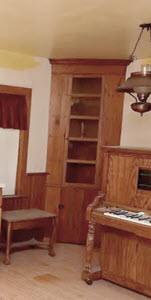
The smaller, house-shaped section to the right of the garage held the kitchen in its entirety. Where the piano is in this photo to the left is where a cast iron cook stove would have stood. You can see just see the chimney for it in the upper images.
In the kitchen corner was this cabinet for the best dishes. My parents kept their small set of wedding china there. The little door below is what fascinated me. When I was four I dreamt I opened it and went inside. So vivid was the dream that I remember it to this day. The actual cupboard had a few shelves. In my dream, just inside the inside top was a small rectangular opening about two by eight inches. Brilliant sunlight flooded down onto what was then a linoleum-covered floor. In the way of dreams I pushed myself through the opening and found myself in our backyard. It was and wasn’t our yard, filled with many more trees and it shimmered with that same unearthly sunlight.
I have had dreams as vivid as this but except for one other none have stayed with me. That one was more recent (about five years ago) and more typical of the dreams I have now: detailed, visual to the point of cinematic, and rich in storytelling. This particular dream felt called out my subconscious. I’d been pulling together the underlying substance for the academic mystery series I wanted to write. As I cannot write with any focus or success until I see the place for a tale, I was doing a lot of image web browsing of campus maps and old photos of colleges from the late 19th- and early 20th-centuries.
One weirdly sleepless night I feel into a brief, very deep sleep. It seemed I dreamt for hours. I found myself both on an old college campus and watching it all as a non-participating observer. There were my buildings, the layout, the great oak trees that lined the old quad. And there was a nearby lake. I didn’t fly over it all but for all that it still felt like one of those cool flying dreams! I saw people, knew who they were and how they knew each other. Part way through it all I woke up, just enough to realize what was happening. I told myself to “look harder” and dove back in, now half asleep and half awake. Then I made myself truly wake up. I grabbed my sketchbook and frantically wrote up notes, recording in some places but in others letting the dream push my awake self to invent more. Just now, as I wrote this last sentence, I looked at those sketchbook pages again and had to laugh. I had labeled the pages “a screenplay.”
Holding on to OR MAKING ideas
In 1885 Robert Louis Stevenson had a bad dream. His wife Fanny spoke of it later: “In the small hours of one morning . . . I was awakened by cries of horror from Louis. Thinking he had a nightmare, I awakened him. He said angrily: ‘Why did you wake me? I was dreaming a fine bogey tale.’ I had awakened him at the first transformation scene.” [7] Stevenson, ill and bedridden, subsequently wrote the book we know as The Strange Case of Dr. Jekyll and Mr. Hyde over the course of the next few days. [8]
While I rarely have nightmares this vivid, my dreams are typically as intense. I put it down to insomnia. (My mother used to joke that I had sleep issues even as an embryo.) I also have one of those brains that simply does not shut down visually. The proverbial counting sheep trick doesn’t work because the beasties are moving! The only way I can get to sleep is to visualize vast swaths of fabric simply hanging there, or to imagine I am looking at a night sky close up.
Megan Schmidt, writing for Discover magazine about who remembers their dreams and why narrowed it down nicely for me:
“. . . it seems that brain differences, individual characteristics and aspects related to the dreams themselves all play a role.” [9]
Over time I have learned to be aware in my dreams. If I am relaxed enough I can dream lucidly, my insomnia is a version of the “wake back to bed” mode for encouraging lucid dreams. [10] But rather than engage in a quiet activity, such as reading, while awake as this method suggests, I imagine characters and scenes for the book I am writing. It’s a bit like sitting in that Victorian wheelchair again. I simply sit and watch people move and talk.
When I fall asleep again I may or may not dream my stories but I do tend to fall asleep with a kind of heightened awareness. That is, I almost always know I am dreaming. If I am close enough to that threshold of sleeping and wakefulness I can control or design the dream. More often, though, my observing self tends to say stuff like “this is important” and “don’t forget this one.”
WRITE IT OUT
In the final section of the Schmidt article, she cites Michael Schredl from Germany’s Central Institute of Mental Health. He states that “It’s really an ability where ‘practice makes perfect.’ In other words, if you keep trying to remember your dreams, you eventually will.” He recommends keeping a dream journal.
I don’t do quite that but I do keep my sketch book or note cards at my bedside. If there is a sentence or phrase I want to expand in in my next day’s writing, I’ll write it out but also write the context. Or, as in the case above where I dreamed my college campus into existence along with a few characters and the bare bones of a plot, I get up and go to the guest room next door that serves as my writing space. Then, since I am usually wide awake, I write out as much as I can of what I saw, what people said, and what the story was.
It’s hardly a perfect process as I often forget dreams between sleep interludes or am too sleepy to get up and write, but the more I do it the better it works. And I comfort myself knowing that if I forget one dream, there will be another that will likely be along similar lines. Dr. Jekyll and his counterpart Mr. Hyde did not appear from nowhere. Stevenson had noted that he’d “. . . long been trying to write a story on this subject, to find a body, a vehicle for that strong sense of man’s double being which must at times come in upon and overwhelm the mind of every thinking creature.” [11]
THINK ABOUT WHAT IF
We all have those moments: If only I’d said ‘this’ or if only that person lived here not there. We imagine what would be different if something else had been different as well. I find I can get some keen and sometimes fantastic ideas for characters or plot by tweaking things this way.
In my academic mystery there is a hockey player, a coach. She is cocky and self assured. She’s interesting and fun to write but she seemed flat. I need her to be somehow less perfectly the gold medal winner she is. What if she weren’t as good as people say she is? Or, what if she was once but isn’t now? If either of those, what made that difference? What if, I thought, what if she were injured in a way that changed who she is now. What do hockey players need besides physical skill and endurance? They need to see everything that’s going on. What if my golden girl was legally blind in one eye due to a recent on-ice accident? A little research into NHL player injury gave me some good ideas and now my character is something more as is my story.
When reading what I wrote I have other what if moments. What if ‘X’ happened two days prior? What if the murderer is not the only one? It means a boat load of rewriting, but then I have different versions to compare.
For another take on this, see this blog essay “Let’s Agree About Conflict” by writer KJ Charles. In the second half she talks about obstacles. Obstacles are a kind of what if. By tweaking something here or there, so much can change. As Charles put it when considering a set of obstacles for a set of characters, what if she had decided differently:
“All of those decisions could have worked. All of them would have led to the characters developing and reacting differently. And since plot is character in action, we’d have ended up with completely different books.” [12]
LET YOUR MIND WANDER
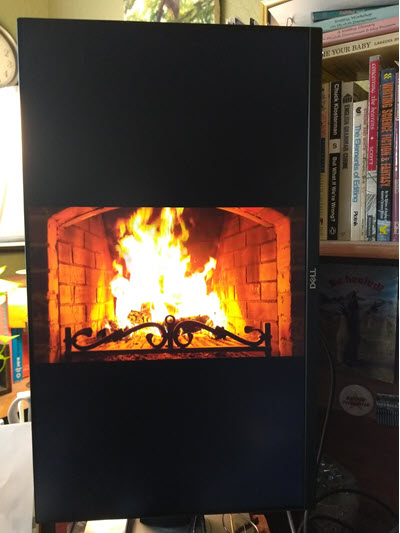 In this time of intense social media bombardment, of frantic and dangerous world events, of private personal and familial concerns, letting one’s mind simply go is not an easy thing. I try to turn away from social media at least twice a week. And by away I mean just that. It’s not easy since I am sitting at my desk with my several work monitors; which is why I can only manage it twice a week! I do much of my writing research online. But I force myself to do it—not open any new tabs on my laptop, shut down my phone. Sometimes it takes me several times to get myself to do this.
In this time of intense social media bombardment, of frantic and dangerous world events, of private personal and familial concerns, letting one’s mind simply go is not an easy thing. I try to turn away from social media at least twice a week. And by away I mean just that. It’s not easy since I am sitting at my desk with my several work monitors; which is why I can only manage it twice a week! I do much of my writing research online. But I force myself to do it—not open any new tabs on my laptop, shut down my phone. Sometimes it takes me several times to get myself to do this.
One trick I’ve found is running a relaxing video at full size on the monitor to my left. Right now it’s running a 10-hour burning fireplace, complete with crackling sounds. I find it immensely soothing. And when I need to let my writer’s mind wander, I turn off the other monitor and just look at the fire crackle away. Here are a few other channels I’ve found good videos on:
-
- Ambience of Yesteryear (which they describe as a “collection of yesteryear-inspired cinemagraphs with historical themes, for ambience and ASMR.”)
- The Silent Watcher (described as a collection of “videos of beautiful and relaxing nature scener and sounds”)
- Cat Trumpet (a collection of “videos . . . ideal for sleep, study, meditation and stress relief”)
More recently, I am learning more about deep breathing exercises. I am not trying to meditate though, for what I want is a daydreaming, associative floating experience, not the meditation goal of the empty or blank mind. I want to play, in a way, I want to see where my mind takes an image, like that woman runner, or a what if notion, or extrapolating a dream story. The breathing helps me slow down my comet-hopping visual mind. This info page over at HealthLine provides instruction for 10 breathing exercises.
Finding ideas for stories or the like is largely a matter of being open to what’s out there. If I try too hard I lose the flow of discovery. If I don’t take the time to relax, without judgment, and simply allow my curious mind to see, I can just as easily miss things. For me it is a matter of seeing, a posture of mind. The ideas are there for the taking if one but will.
If you have a question or comment for me, drop me a line via my Contact page.
© J.A. Jablonski 2022. All rights reserved.
HOW TO CITE THIS POST
Jablonski, J.A. (2022, March 22). Signs of Ideas. Blog post. J.A. Jablonski (website).
https://jajablonski.com/2022/03/22/signs-of-ideas/
IMAGE CREDITS
Header Image:
-
- Lightbulb in sand. Photo by Glen Carrie on Unsplash
- Colorful sidwalk bricks. Photo by James Lee on Unsplash
- Word “ideas” in grey stone. Photo by Juan Marin on Unsplash
First Lady Ida McKinley in the White House Conservatory (circa. 1900). From The White House Historical Association.
Three small old fashioned light bulbs. Modified version of this public domain image.
Vertical image set of found items-turned-magical-postal-gift. All photos by J.A. Jablonski. All rights reserved.
Cream brick farmhouse. On Milwaukee website. Kitchen corner image modified from realtor ad.
Fireplace video on vertical computer monitor. By J.A. Jablonski. All rights reserved.
SELECTED SOURCES | NOTES
[1] Popova, Maria. (2014). Ursula K. Le Guin on Where Ideas Come From, the “Secret” of Great Writing, and the Trap of Marketing Your Work. (blog post). Brain Pickings. [NOTE: Popova has renamed this site The Marginalian.]
[2] Burkley, Melissa. (2017, December 4). Where Do Writers Get Their Ideas? Blog post. The Social Thinker. Psychology Today. Burkley also wrote a blog from 2017-2019 called The Writer’s Laboratory Blog that I’ve found insightful.
[3] Read more about Ida McKinley at this page from the National Park Service.
[4] I wrote about this wizarding event on my artist’s blog, Dante’s Wardrobe. Here is the link to that set of posts.
[5] Writing fictional correspondences is a blast! If you are interested in how to start one and how to make your own letterhead, mailboxes, faux postage, etc. see this collection of posts on my Dante’s Wardrobe site. NOTE: This is a fun classroom activity as well as one for lovers, roommates, and families.
[6] The posts listed in note #4 here include a subset on what I referred to as the faux packages. You can find those at this link.
[7] Balfour, Graham (1912). The Life of Robert Louis Stevenson. Vol. II. New York: Charles Scribner’s Sons, pg. 15.
[8] An e-version of The Strange Case of Dr. Jekyll and Mr. Hyde can be found on the Project Gutenberg website here.
[9] Schmidt, Megan. (2019, July 14). “Why Do Some People Always Remember Their Dreams, While Others Almost Never Do?” From Discover website.
[10] Nunez, Kirsten. (updated on January 5, 2022). “5 Lucid Dreaming Techniques to Try.” Healthline website.
[11] Luckhurst, Roger. (n.d.) “Robert Louis Stevenson’s Strange Case of Dr Jekyll and Mr Hyde.” British Library website. Accessed March 18, 2022.
[12] Charles, KJ. (2021, June 25). “Let’s Talk About Conflict.” Blog post. KJ Charles website.


